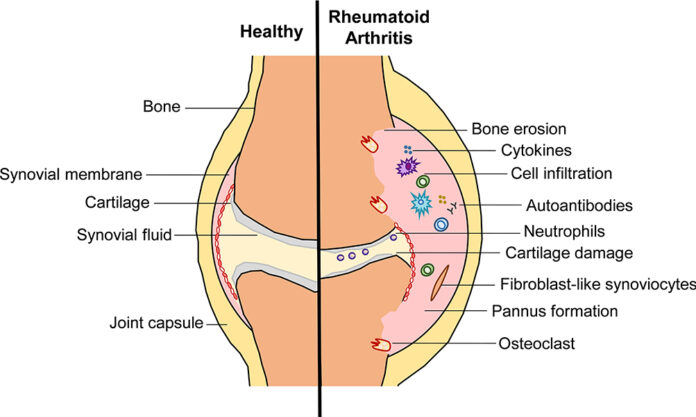The article from Johns Hopkins Arthritis Center titled “RA Pathophysiology” dives into the underlying biological processes of rheumatoid arthritis (RA). It emphasizes that RA is a complex immune-mediated inflammatory disease (IMID), meaning it involves both the immune system and inflammation (Ra Pathophysiology, 2024). Researchers have discovered that multiple pathways, involving various cytokines and cells, contribute to the development and progression of RA. These findings have helped advance treatments, particularly with targeted biological therapies.
One of the main points discussed is that RA is driven by the immune system continuing to attack the body, even after the initial trigger may no longer be present. “Once initiated and even after a putative trigger may be eliminated, there are feed forward pathways that result in an auto-perpetuating process” (Ra Pathophysiology, 2024). This means that RA continues damaging joints and tissues due to these pathways.
The article also highlights changes in the synovium (the joint lining) in RA patients. Normally, it’s a thin layer of cells, but in RA, it becomes much thicker and filled with inflammatory cells like “T and B lymphocytes, macrophages, mast cells, and mononuclear cells” (Ra Pathophysiology, 2024). This thickened tissue can act “like a tumor,” invading and eroding bone and cartilage.
Cartilage and bone are also affected in RA. Cartilage, which normally cushions joints, is degraded due to “proteolytic enzymes (collagenase, stromelysin)” released by synovial cells and chondrocytes (Ra Pathophysiology, 2024). Bone destruction happens through the activation of osteoclasts, which break down bone under the influence of cytokines such as “TNF and IL1” (Ra Pathophysiology, 2024).
In summary, this article illustrates how the immune system drives RA’s ongoing inflammation and destruction of joint tissues, which is key to understanding the disease’s progression.
Ra Pathophysiology • Johns Hopkins Arthritis Center. Johns Hopkins Arthritis Center. (2024). https://www.hopkinsarthritis.org/arthritis-info/rheumatoid-arthritis/ra-pathophysiology-2/
Dove Medical Press. (2021). “Contribution of Toll-Like Receptors and the NLRP3 Inflammasome in Rheumatoid Arthritis Pathophysiology” [Image]. https://www.dovepress.com/contribution-of-toll-like-receptors-and-the-nlrp3-inflammasome-in-rheu-peer-reviewed-fulltext-article-ITT
OpenAI. (2024). ChatGPT (Sept 19 version) [Large language model]. https://chat.openai.com/chat




